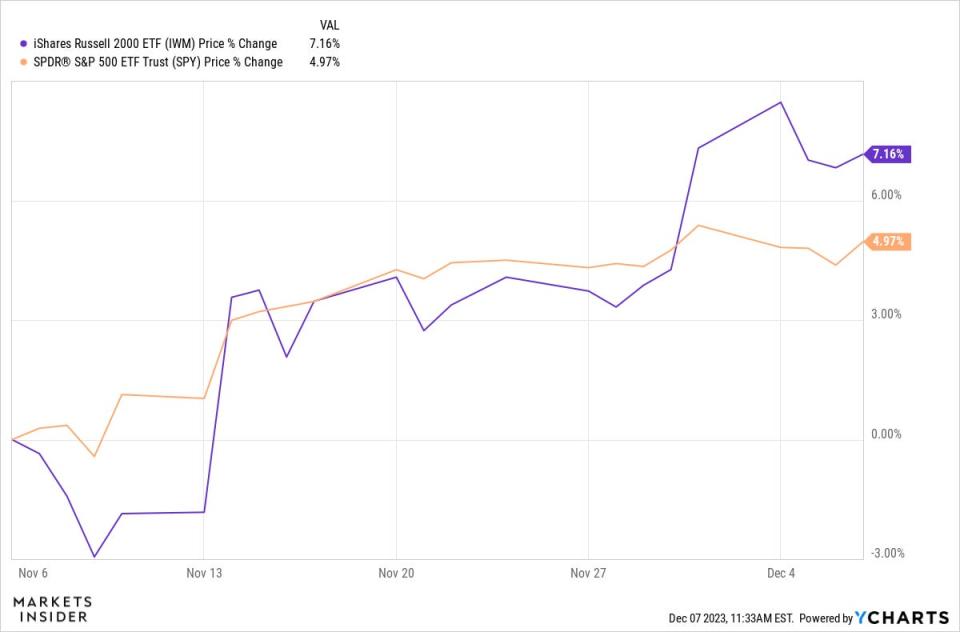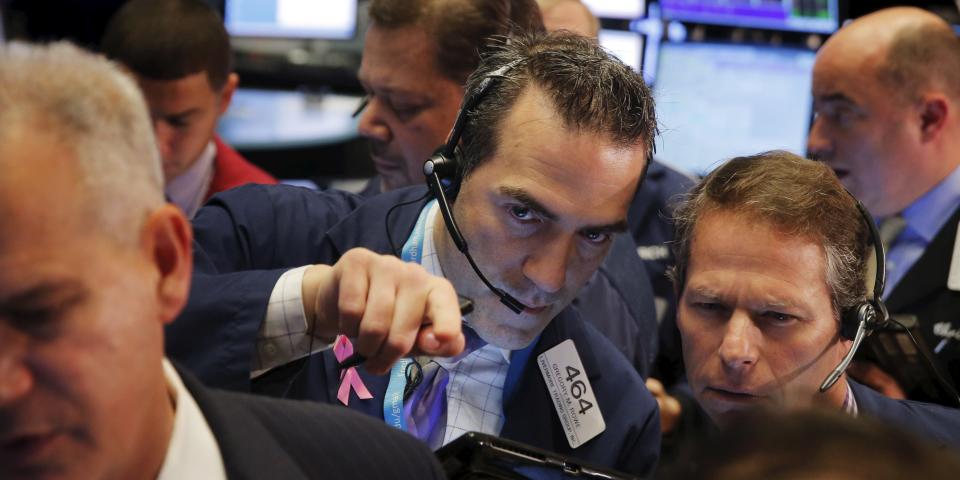JPMorgan’s bearish 2024 stock market outlook could be derailed by a surge in small cap stocks.
Technical strategist Jason Hunter expects the S&P 500 to fall 23% by mid-2024.
But a risk-on surge in stocks that have largely missed out on this year’s rally could cause a rethink.
JPMorgan’s top chart expert Jason Hunter was bearish on the stock market heading into 2024, but a risk has emerged that could derail that view.
He predicted the S&P 500 will re-test its bear market bottom reached in October 2022, forecasting a dive to 3,500. That’s by far one of the most bearish projections on Wall Street, even more downbeat than JPMorgan’s house view that the S&P 500 falls to 4,200 next year.
Hunter’s pessimism is based on the fact that much of this year’s rally has been driven by only a handful of mega-cap tech stocks. The lack of breadth, or market participation in the current rally, is concerning to him.
But a recent breakout above major resistance levels for the broad stock market averages is starting to challenge Hunter’s bearish view.
“A pure chart-based assessment leaves our bearish first half equity outlook tactically on the backfoot going into the fourth quarter,” he said in a note late last month.
At the time, he said a surge in stock market laggards would be “a very low probability event.” But since Hunter’s outlook was published, those laggards have in fact surged further.
The small-cap Russell 2000, which largely sat out this year’s stock market rally, has begun to outperform the S&P 500. Over the past week, the Russell 2000 is up nearly 3% while the S&P 500 is about flat.
That puts the Russell 2000 up about 7% over the past four weeks, outpacing the S&P 500’s gain of about 4.8% over the same time period.
It signals that investors could be finally rotating into laggard stocks and pushing them higher. And according to Hunter, that type of price action would derail his bearish outlook for 2024.
“We are therefore looking for large cap to form short-term distribution patterns into the early weeks of next year, or for signs that the laggards are starting to breakout. The latter is clearly the risk scenario for our base-case outlook and will leave us having to rethink the 2024 trajectory,” he said.

Read the original article on Business Insider
Credit: Source link




